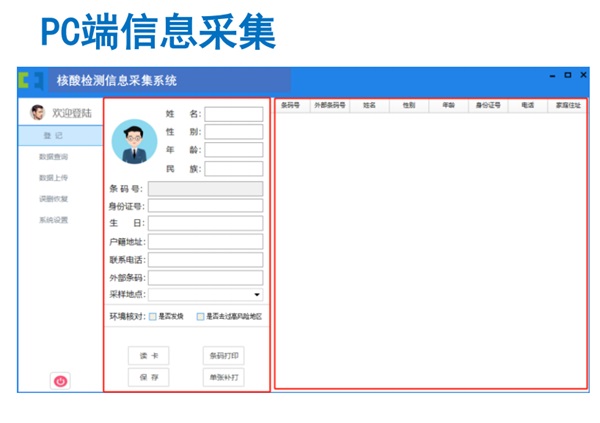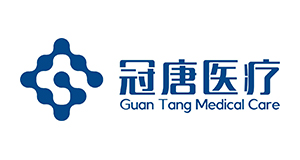ʵ�鰸��
��Ʒ
����
LISϵͳ������״����
- 2022-04-16
- / ԭ��
- 130
Each laboratory uses a wide variety of laboratory LIS systems, each with its own advantages, and also has special functions formulated according to the undergraduate room's own system and environment. We will only discuss what most laboratories can do and strive to do at present. In general, the paperless process of LIS clinical laboratory automatic audit system can describe the development status of the system from three aspects.
1 �ٴ�ʵ�����Զ���
1 clinical laboratory automation
LISϵͳ����ĥ���Ƶ������˶�Ϊ��Ҫ����
����ĥ��ְԱ�Ļ�е����¼�����LISʵ���ҵ������벻��ʵ������������
������ĥ��ҽѧ��������ĥ���걾�Ŀ�������
��ʵ�����Զ����ѳ�Ϊĥ���Ƶ�������/��ʵ�����Զ�����ָͨ������Ͻ��ͬ���ٴ�ʵ�����Զ���������
��ʵ����Ʒ������ࡢԤ���óͷ������Ч�����桢���óͷ���ȫĥ�����̵��Զ�����
LIS system takes the production activities of the laboratory department as the main content, and is the manipulator and scissor hand of the inspectors. The development of LIS laboratory is inseparable from the laboratory. In recent years, with the development of laboratory medicine and the rapid growth of test specimens, laboratory automation has become a new trend in laboratory medicine. Laboratory automation refers to connecting the clinical laboratory automation analyzer through the transmission system to realize the automation of the whole test process such as sample transportation classification, pretreatment, test result report and post-processing.
2 �Զ����ϵͳ��
2. Automatic audit system.
ĥ��Ч����ȷ�Ժ�ʵʱ����ȷ��ĥ�������Ľ���������Ʒ��ҽԺ�����۱�Ҳ��ĥ��Ч��������������ȷ��Ҫ��
��Ҫ������Ǹ��꼶��˫��������ӱ��о�Ч���з���
�����������걾��
����Ŀ¼����
����Ȼ�Ǹ��꼶��Ч�����
��Ҳ������ֹ�ػ᷺���ʧ�ļ��
�����ٴ���Ϻʹ�������Ҫ��ƶ����ʵ������Ϣϵͳ(LIS)����Ϊ��������ṩ�˼ƻ������ҹ���ҽԺĥ������������LIS��ˢ������
���ٴ�����Ч�����Զ���ƹ���һֱ����
���ٴ�ѧ���ļ��Ч���������������о�Ч������
���Զ�������췲�˹����Ч���ļ����֮��IJ��û������������Ч����ע
�����˹�������
���Զ��������̭©������������
������Լ���˹�������
���������ڹ��˵����ڷ�������Ч���걾��Լռ90%��ʱ��


The accuracy and timeliness of inspection results is the core content to ensure the inspection quality. The evaluation standard of grade hospitals also puts forward clear requirements for the audit of test results, which must be senior grade and double audit. It is found from the results of this study that due to the large number of biochemical samples and the number of projects, even the result audit of senior grade will inevitably have wrong examination, which will bring unnecessary trouble to clinical diagnosis and treatment. The introduction of laboratory information system (LIS) provides a solution to this problem. Since the introduction of LIS in the laboratory departments of most hospitals in China, the automatic audit rules of clinical biochemical results have been continuously improved, and the test result rate of clinical students has been significantly reduced. The results show that there is no significant difference between the detection rate of automatic audit and abnormal manual audit. The results show that compared with manual audit, automatic audit greatly saves manual workload on the premise of reducing missed and false inspection, especially when filtering out a large number of non-special inspection results (about 90%).
�Զ���ƹ���Ľ�����ʵ���Զ���ƵĻ���
����������ȷ��������������������
�����Ƹ�����ĥ����Ŀ�������������ڴ˻�����
����ƾ֤�ٴ���Ҫ����ʵ��������������ƹ���������
����������CK��MB≥CK����һ������ĥ��Ч��CK-MB≥CK��������
��������æ�������Աע������Ч���Ľ���
������Ѫ�� �ˣ�≥6.5��mol/L����Σ��ֵ
��һ������ĥ��Ч��
����������æ����Σ��ֵ
���������ְԱ���ǰ��������
��������©������ĥ��Ч�������쳣
�������ڸ�ֵ���쳣��ʱ����ĥ����Ŀ����
����������Ӧ���������Զ���ƹ�����ƶ�����Ҫ��������������ԭ��
����Ϥʵ��ǰ��������������
��������ʵ���ٴ�ҽѧ֪ʶ
��ʹ��ƹ������������
The establishment of automatic audit rules is the basis of automatic audit, but the premise is to ensure the normal operation of biochemical instruments and control the quality control of biochemical inspection items. On this basis, audit rules can be set according to the actual work experience of clinical needs. For example, the CK-MB ≥ CK rule can be set. Once the inspection result CK-MB ≥ CK occurs, the instrument will immediately remind the auditor to pay attention; Set the limit of the result and assume that serum K + ≥ 6.5mmol/l. For critical value, once the test result appears, the instrument will prompt the critical value immediately and give an alarm before the audit by the auditor to prevent leakage. If the inspection result is particularly abnormal, you can set the inspection item alarm when the value is negative or abnormally high, and give corresponding prompts. The makers of automatic audit rules need to master the working principle of the instrument, be familiar with the quality control process before the experiment, and have solid clinical medical knowledge to make the audit rules reasonable and effective.
3 ��ֽ������
3 paperless process
ҽԺ����ֽ�������ǵ��Ӵ��óͷ���������Ϻ���ص�����������ֻ����һ�����ƿ�
���Ϳ��Կ�չһϵ�е������˶�
����Һš���Ѫ��Ч���Ч�����ʺʹ�ӡ������ҽѧʵ����
����ֽ����ָͨ����Ϣϵͳʵ��ʵ�����������̵����ֻ�
����������ʵ���ҵ���̬ϵͳ���ɵ�ʵ������LIS��ϵͳ�����������ڴ�ӡ�Ŷӳ�Ѫ����Ȼ�����Ч��
The paperless process of the hospital is to electronically process all the contents related to diagnosis and treatment. With only one diagnosis and treatment card, patients can carry out a series of diagnosis and treatment activities, such as registration, query and printing of blood test function test results. For the medical laboratory, paperless refers to the digitization of the laboratory management process through the information system, and the integration of the whole laboratory ecosystem into the laboratory LIS. The system includes but is not limited to the basic functions such as printing the queue blood drawing report.




